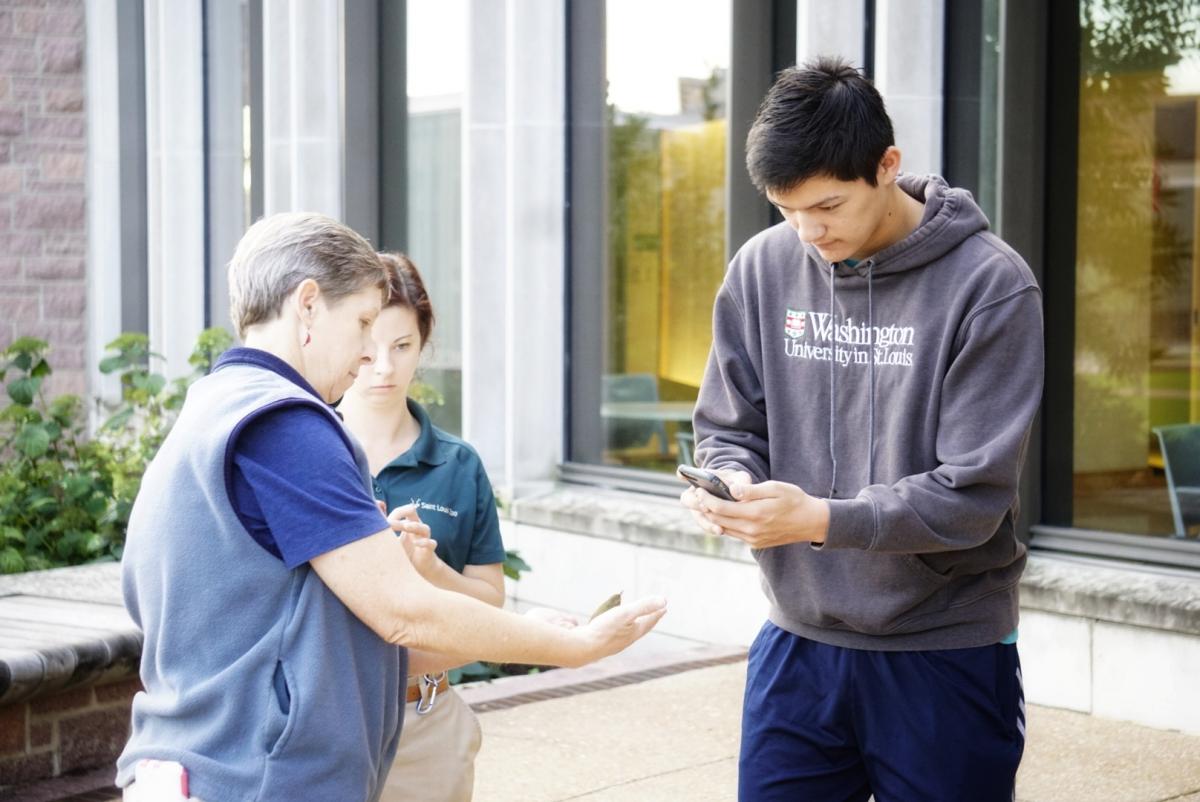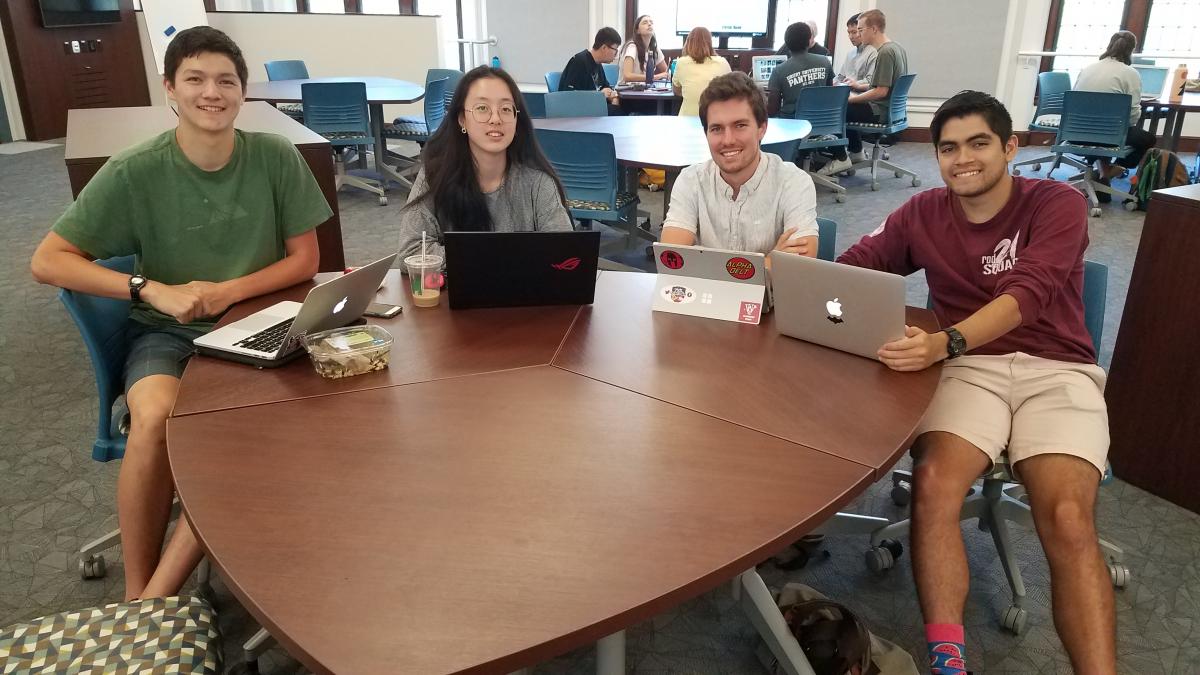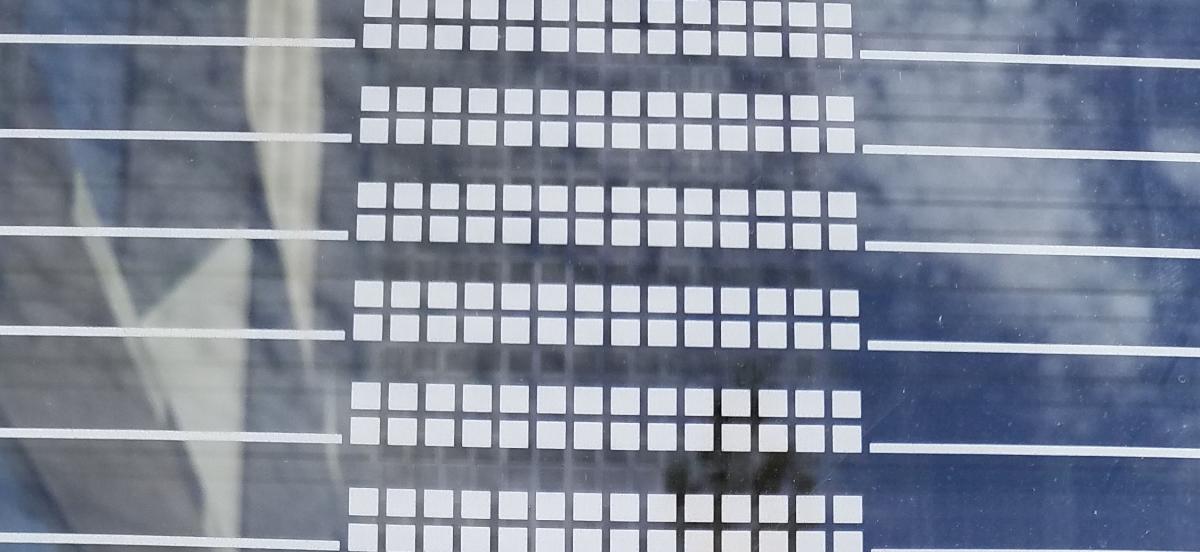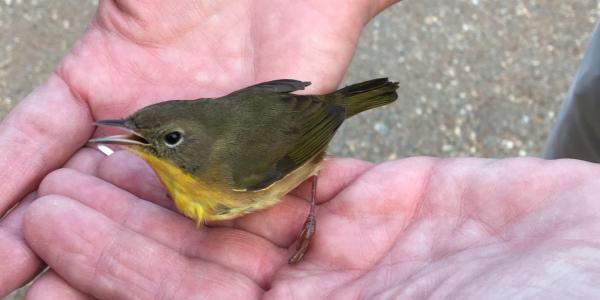A new project aims to document collisions between birds and campus buildings, with the ultimate goal of making built environments safer for migrating avian species.

At 7:00 a.m. every weekday morning, four Washington University students gather near Graham Chapel and traverse a loop around campus. As night turns into day, they walk in search of often-forgotten members of the campus community: birds. In the trees and shrubs, they find birds resting. In the sky, they find birds flying. And sometimes, on the ground, they find a fallen bird, injured or dead as a result of a collision with a building.
When they encounter an injured bird, they put it in a brown paper bag and continue their walk. If it starts flitting around in the bag, they release it on the spot. Otherwise, they take it to the local wild bird rehabilitation center. Although finding a dead or injured bird is upsetting, it is the focus of their work – as part of this semester’s Sustainability Exchange class, these students are studying bird collisions on campus. Gathering this information, they hope, will ultimately help make built environments safer for our feathered counterparts.
An interdisciplinary experiential learning class, the Sustainability Exchange has been offered since spring 2015. The course is structured around semester-long projects that small groups of students carry out with a WashU faculty member and an outside client. “The idea of the course is to get students hands-on experience in working on sustainability projects both on and off campus,” said Bill Lowry, professor of political science and the director of the course since its inception.
The bird collision project, which will likely span at least two semesters, seeks to understand the scope of bird collisions on the WashU campus, take action to mitigate the danger to birds, and raise awareness among the entire campus community. The collaborators on the project include four WashU undergraduates; Jonathan Losos, William H. Danforth Distinguished University Professor in biology and director of the Living Earth Collaborative; and Anne Tieber, Curator of Birds at the Saint Louis Zoo.

The students involved in the project emphasized the inherently interdisciplinary nature of the Sustainability Exchange as its key strength. Representing Arts & Sciences and two more WashU schools, they are pursuing degrees in economics (Ethan Polaski), chemical engineering (Adrian Martinez), computer science (Ken McNelly), and architecture (Chenyu Zhang).
Nationwide, an estimated 500 million birds die annually as a result of collisions with buildings, windows, and turbines, largely during the spring and fall migration seasons. Studying this problem is especially important in St. Louis: A recent study from the Cornell Lab of Ornithology found that in terms of birds’ exposure to artificial light, St. Louis is the fifth most dangerous city in the country during the spring migration and the sixth most dangerous during the fall migration.
Tieber, who proposed the project to Losos, has been studying bird collisions at the zoo since 2015. In that time, her team has lowered the zoo’s incidence of bird collisions by 85%.
“Birds migrate at night. When it comes to four or five in the morning, they are coming down from their nighttime flight and they're going to stop and refuel and rest,” explained Tieber. “But if they get caught in a bunch of uplit buildings as they're migrating through, they get disoriented.” As a result, “they just keep flying, and finally they usually fly into the light, which is then a collision with a building.”
“We're not doing this to see if WashU is a bad place for birds... We're doing it just to keep birds safe. And if we can help by doing something to a building, something simple and easy, why not do it?”
During the day, the danger to birds comes from reflections off large glass windows. Reflections cause the birds to mistake the glass for open sky or think that there is a tree on the other side, so they fly directly into the glass. Tieber estimates that 80% of birds who collide with buildings die as a result.
The first phase of the project is data collection to understand how often bird collisions occur on campus and which buildings are involved in the most collisions. The morning walks are the main source of data, but the students want to involve the entire WashU community in this process and will create a website and other outreach materials to raise awareness.

In recent years, architects have become more aware of bird collisions and have taken measures to decrease the risk associated with new buildings, including in those within the newly transformed east end of campus. On Schnuck Pavilion and the Sumers Welcome Center, a pattern of white dots and lines was incorporated into the glass. This pattern, called frit, is “very much geared towards reducing bird strikes through increasing the visibility of glass,” said Nick Sillies, an architect who worked on the project.
Other East End buildings incorporate different strategies to mitigate the danger to birds. The new mirror-like exterior of the Kemper Art Museum has an angular shape, while Weil Hall employs exterior shading devices through almost three-quarters of the building, Sillies said. Both measures diminish the reflections of sky and trees that would be dangerous to birds.
Older buildings on campus may not have such bird-friendly features as part of their design, so once the students understand the scope of bird collisions on campus, they will begin to discuss mitigation efforts. Possible techniques include adding frit to windows or coating them with a material that absorbs ultraviolet light while allowing visible light through. Many species of birds see ultraviolet light, so such coatings make the windows appear opaque to them yet transparent to humans. The students will examine these and other options and decide which they could deploy most effectively across campus.
In this project, the students are applying what they’ve learned in previous classes and gaining a new perspective on the interactions between humans and nature. Zhang, an architecture student, mentioned that her design classes tend to focus on theories, whereas in the Sustainability Exchange, “working in collaboration with real institutions and real problems will facilitate my understanding of what sustainability means.”
Polaski, an economics major, grew up spending a lot of time in nature but didn’t know much about bird collisions before joining this project. “As humans are expanding their cities and expanding buildings all over the place, I thought it would be interesting to see how we can work with the birds instead of working against the birds,” he said. He hopes that others will also take an interest in creating urban spaces that help the local ecosystem.
“We're not doing this to see if WashU is a bad place for birds,” Tieber emphasized. “We're doing it just to keep birds safe. And if we can help by doing something to a building, something simple and easy, why not do it?”
This bird collision project is one of six in the Sustainability Exchange class this semester. Although the projects span a diverse range of topics, all share a common goal, said Lowry: “We try to make the world a better place, one project at a time.”
The project team urges anyone who witnesses a bird collision or finds an injured bird on campus to report it to online: https://sites.wustl.edu/birdstrike/report/.




